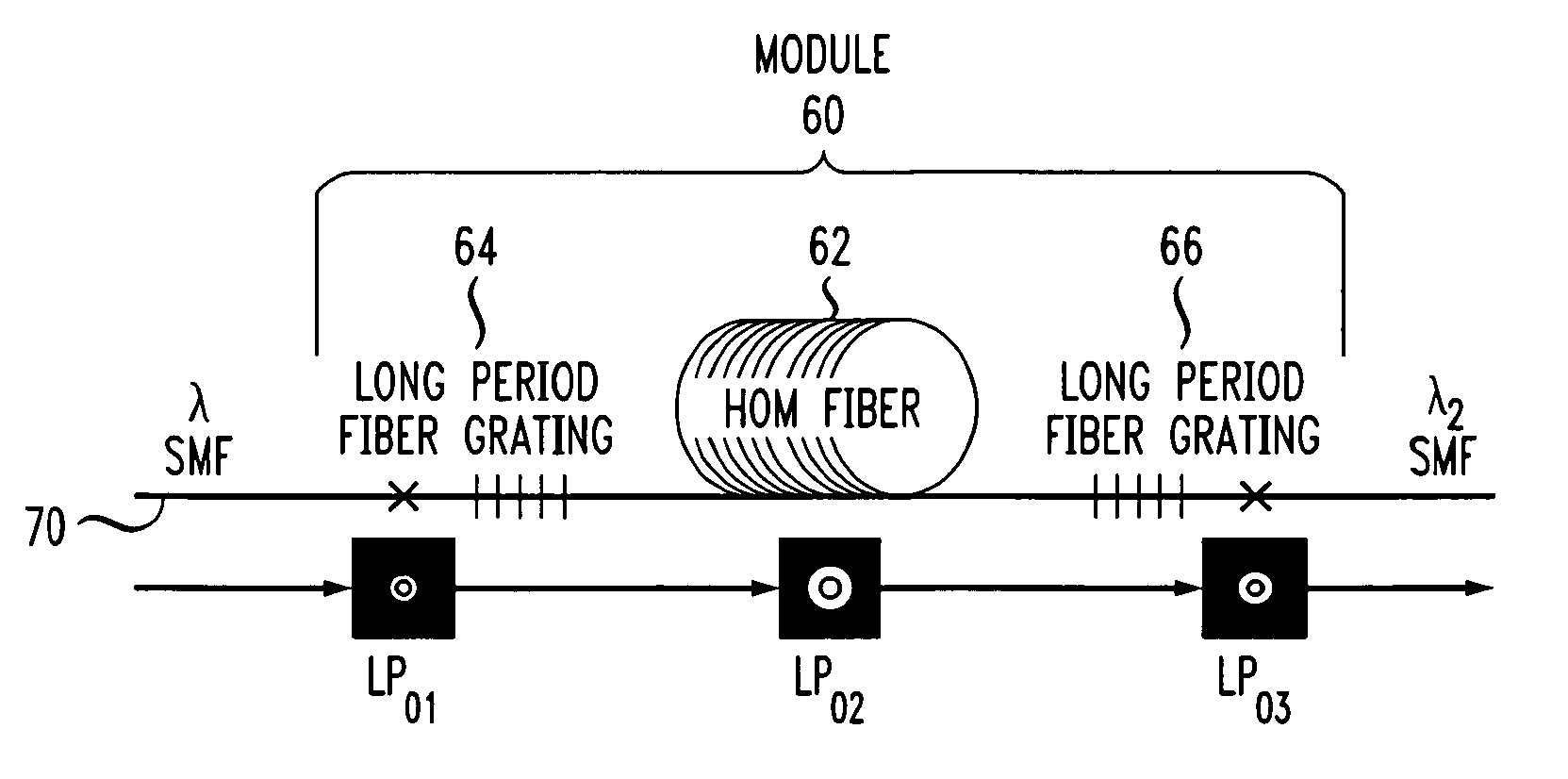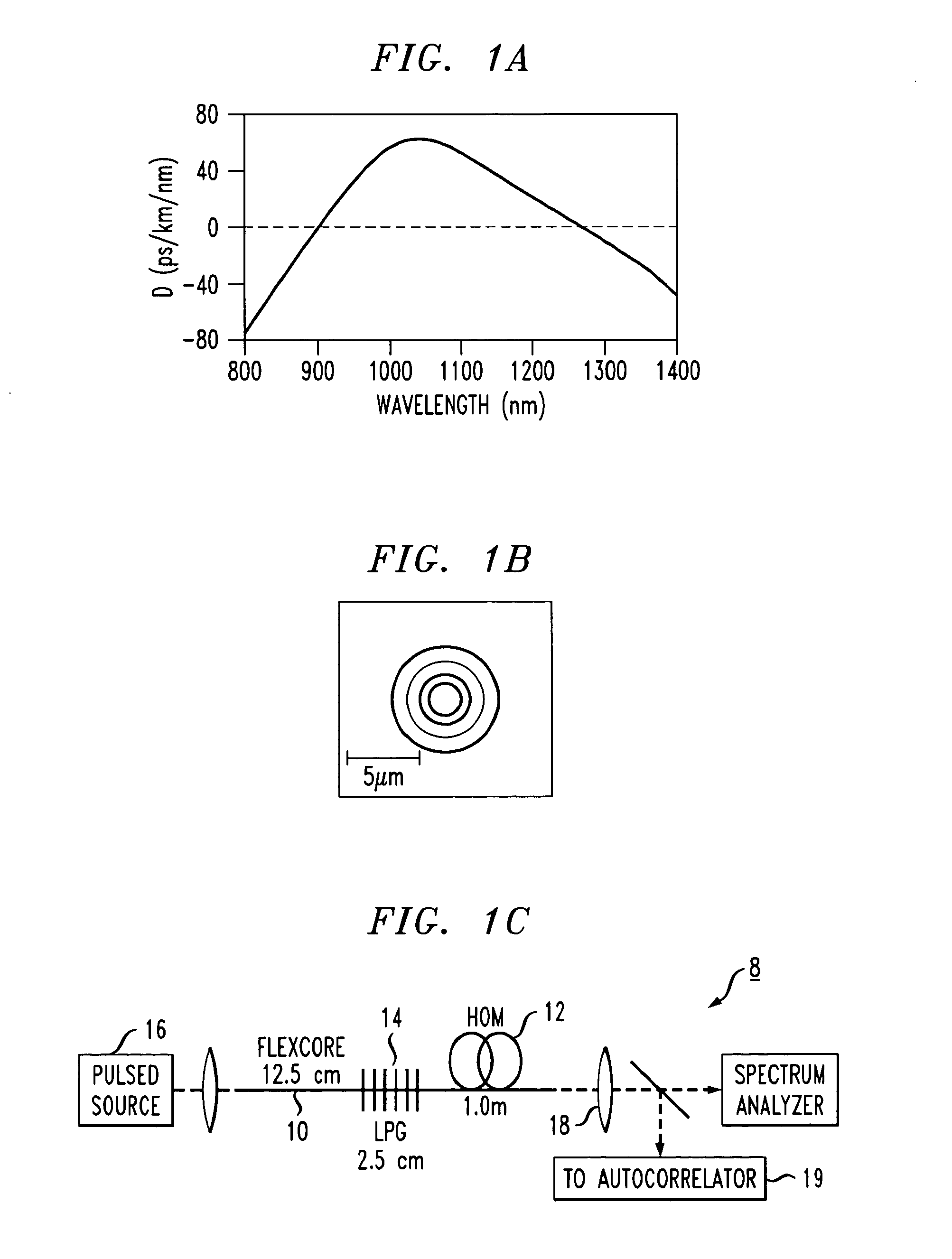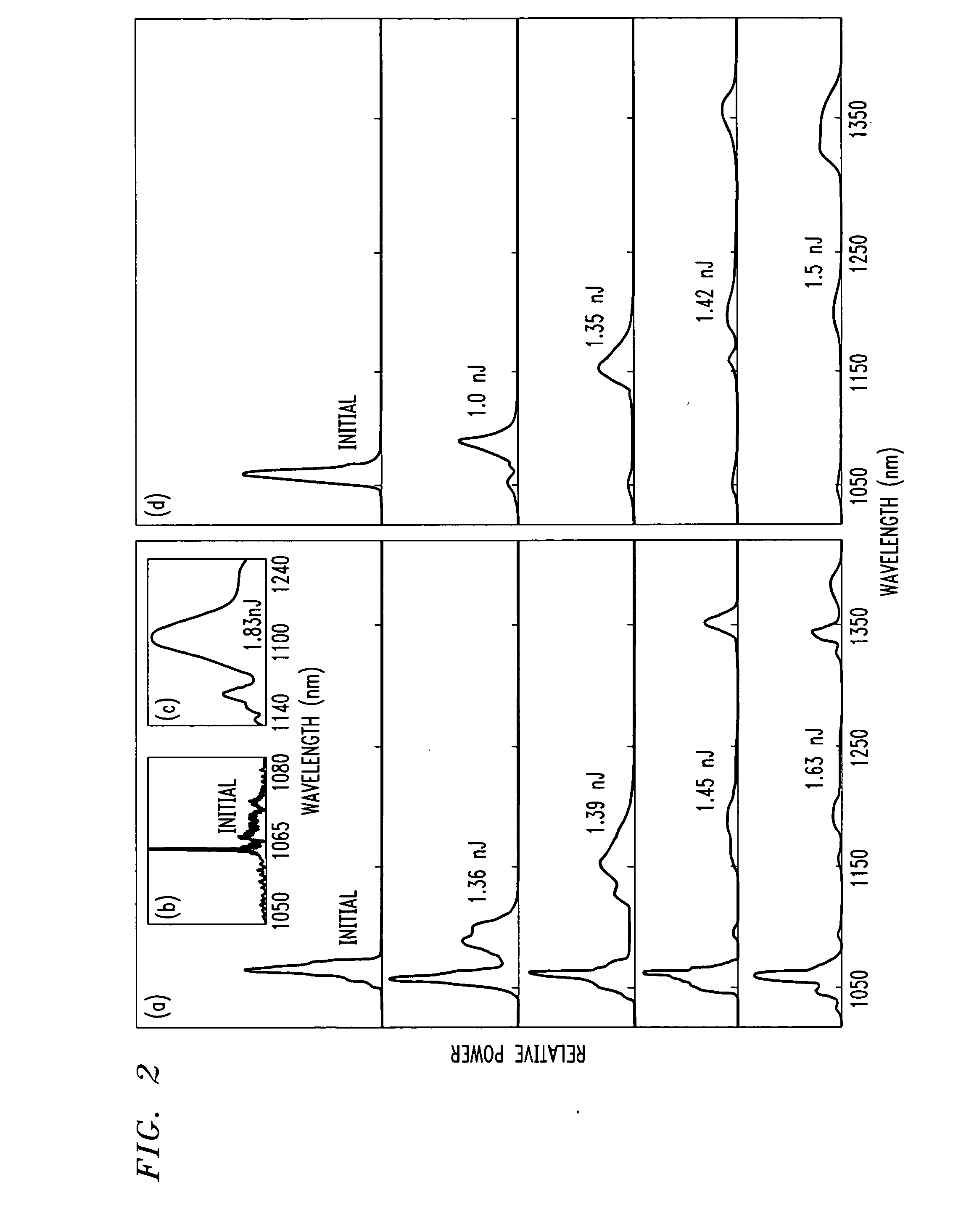Production of optical pulses at a desired wavelength utilizing higher-order-mode (HOM) fiber
a production method and fiber technology, applied in the field of optical pulses at a desired wavelength using higher-ordermode fibers, can solve the problems of limited wavelength tunability, limited multi-photon imaging applications of fiber sources including lasers, and restrict the applicability of lasers, so as to enhance the modal stability of the signal and enhance the modal stability
- Summary
- Abstract
- Description
- Claims
- Application Information
AI Technical Summary
Benefits of technology
Problems solved by technology
Method used
Image
Examples
example 1
Demonstration of Soliton Self-Frequency Shift Below 1300 nm in Higher-Order-Mode, Solid Silica-Based Fiber
[0110]Soliton-self frequency shift of more than 12% of the optical frequency was demonstrated in a higher-order-mode (HOM) solid, silica-based fiber below 1300 nm. This new class of fiber shows great promise of supporting Raman-shifted solitons below 1300 nm in intermediate energy regimes of 1 to 10 nJ that cannot be reached by index-guided photonic crystal fibers or air-core photonic band-gap fibers. By changing the input pulse energy of 200 fs pulses from 1.36 nJ to 1.63 nJ, clean Raman-shifted solitons were observed between 1064 nm and 1200 nm with up to 57% power conversion efficiency and compressed output pulse widths less than 50 fs. Furthermore, due to the dispersion characteristics of the HOM fiber, red-shifted Cherenkov radiation in the normal dispersion regime for appropriately energetic input pulses was observed at energies of 1.45 nJ and above.
[0111]The HOM fiber use...
example 2
All Fiber, Wavelength Tunable Femtosecond Sources for Biomedical Spectroscopy and Imaging
[0127]To emphasize the significance of the proposed femtosecond sources, we compare our proposed sources with the existing mode-locked Ti:S laser, Ti:S pumped OPO and femtosecond fiber sources. FIG. 8 shows the wavelength tuning range of the sources. The absorption spectrum of water is also shown to indicate the relevant wavelength range for biomedical imaging. The arrows indicate the tuning ranges of a femtosecond Ti:S laser, a Ti:S laser pumped OPO, and the proposed sources. The solid circles represent the wavelength of existing femtosecond fiber lasers. The tuning range that has already been demonstrated in a preliminary study is also indicated. In essence, we want to develop two all-fiber femtosecond sources that cover approximately the same wavelength window as the existing Ti:S laser and Ti:S pumped OPO. These wide wavelength tuning ranges were simply impossible to achieve in any existing ...
PUM
 Login to View More
Login to View More Abstract
Description
Claims
Application Information
 Login to View More
Login to View More - R&D
- Intellectual Property
- Life Sciences
- Materials
- Tech Scout
- Unparalleled Data Quality
- Higher Quality Content
- 60% Fewer Hallucinations
Browse by: Latest US Patents, China's latest patents, Technical Efficacy Thesaurus, Application Domain, Technology Topic, Popular Technical Reports.
© 2025 PatSnap. All rights reserved.Legal|Privacy policy|Modern Slavery Act Transparency Statement|Sitemap|About US| Contact US: help@patsnap.com



